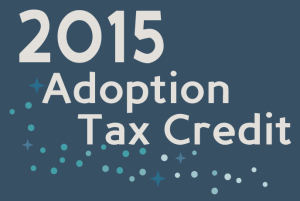With tax season around the corner many of our families are wondering what the Adoption Tax Credit is and how it works. Below we have provided a brief explanation of the Adoption Tax Credit, the updated amount available to families for the 2016 tax season, and an infographic to help families understand how the Adoption Tax Credit works.
What is the Federal Adoption Tax Credit?
The Federal Adoption Tax Credit can help families offset the costs of qualifying adoption expenses, making adoption possible for some families who could not otherwise afford it. Families who adopted a child, or tried to adopt a child, and paid qualifying expenses may be eligible for the credit.
With the passage of the American Taxpayer Relief Act of 2012 the Adoption Tax Credit became a permanent part of the tax code. However, the tax credit is not refundable, which means that only those individuals with tax liability (taxes owed) will benefit.
The maximum adoption tax credit for 2016 is $13,460. The Adoption Tax Credit limit is based on modified adjusted gross income (MAGI) and is recalculated each year based on current cost of living. For the 2016 Adoption Tax Credit, the maximum amount available will begin to phase out for families with MAGI above $201,920 and will be unavailable to families with incomes around $241,9200 or above.



